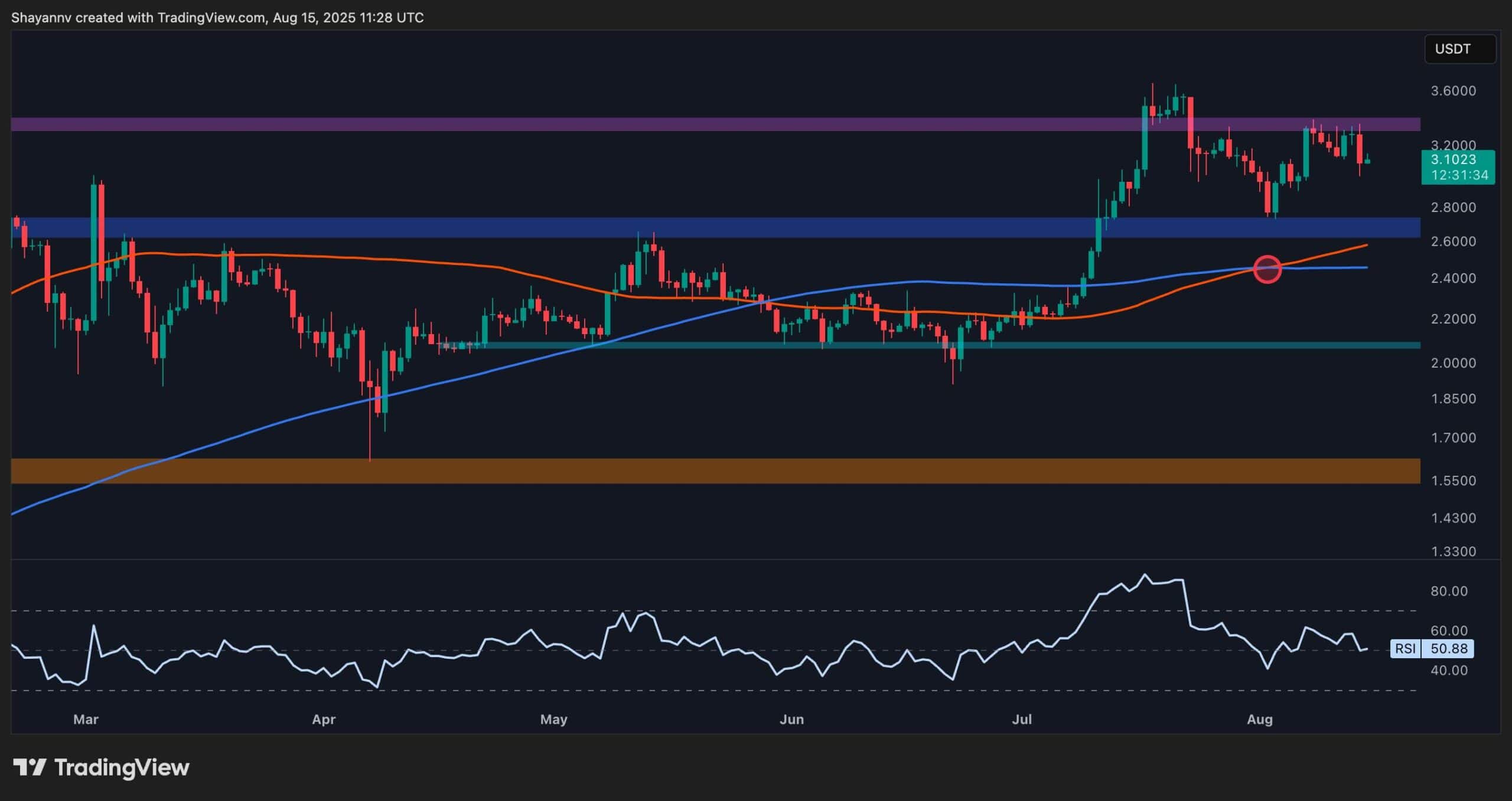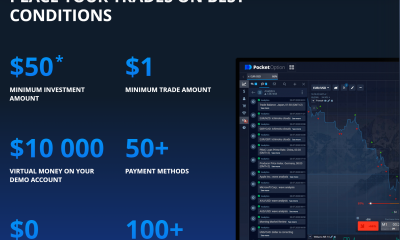Cryptocurrency
DVT 101: All You Need to Know on ETH Staking with Decentralized Validator Technology

By Adam Efrima
The crypto space is full of buzzwords and abbreviations, and today, I’ll be discussing one that’s not quite so widespread yet: Decentralized Validator Technology, or DVT. It promises to fix a major worry about how traditional validator setups operate on Ethereum by significantly decentralizing and securing the process.
Validators are the entities that build blocks in Proof-of-Stake (PoS) blockchains, similar to miners in Bitcoin (and other Proof-of-Work (PoW) protocols). Ever since Ethereum moved entirely to PoS in September 2022 with The Merge, the blockchain has been supported by a set of approximately 900,000 validators, which theoretically makes it the most decentralized PoS network currently live.
However, not all that glitter is gold in this space. Multiple issues have been raised regarding how PoS is currently implemented in Ethereum, all of which contribute to making it a bit less decentralized than it would seem. But first, we need to dive into the weeds of what a validator in Ethereum really is.
Ethereum Validators Aren’t Like the Rest
A big difference between Ethereum and other PoS networks is that the validator nodes need to have a stake of 32 ETH — no more, no less. This limit was chosen so that it’d offer a reasonable entry point for average Joes to stake while still not creating too many validators for no reason. Right now, 32 ETH is worth about $95,000, but back when staking was first introduced (first as a separate chain) in 2020, it was closer to $30,000.
If you hold more than 32 ETH though, you’ll need to split your stake between multiple “validators,” which explains the very large number of active validators today. In practice, there are likely 10,000-20,000 independent entities (including companies and indie stakers) who are contributing to Ethereum security.
On a technical level, validators are a special entity controlled by their own private keys, which are activated when a prospective staker bridges 32 ETH to the Beacon chain. This chain manages the consensus process, assigning a portion of validators to propose blocks while others “attest” that these blocks are correct. Behaving improperly, for example, by signing invalid blocks or by being offline, leads to stake slashing (though it’s usually quite soft) or penalties incurred on the ETH principal.
Many PoS systems (a.k.a Delegated-PoS or DPoS) enable stake delegation, where users can natively assign their coins to a particular validator, who they trust to do a good job validating the chain and earning staking yield (a centralizing force). On Ethereum, there are no native mechanisms to do this, meaning that people must either run their own validator (self-custody of keys) or trust a service to do so — that is, until DVT came along.
The Pressing Need to Decentralize Staking
The premise of Proof-of-Stake is that no single entity can control more than a certain percentage of the total stake that is currently engaged in validating a protocol. In that case, they can dictate what is the “majority” chain and start behaving incorrectly without penalties, jeopardizing the functioning of the network.
In Ethereum, currently, the vast majority of the staking power is held by Lido, a decentralized finance protocol that offers a convenient “wrapper” or liquid staking token (LST) of a user’s staked position called stETH. The benefit of this system is that you can just stake on the protocol or even buy the token and start staking to earn yield without doing anything else — the underlying system does everything for you.
Lido as a whole currently controls a bit more than 31% of the ETH staked, which is dangerously close to the 33% threshold needed to prevent Ethereum blocks from being finalized (if Lido wished to do so). This sounds worse than it really is: Lido is a decentralized protocol that spreads its stake over many independent node operators, so it can’t really coordinate easily to perform this attack.
Also, as a decentralized business whose entire model relies on being trusted by the Ethereum community, it has no incentive to do so. Finally, a 33% attack is not the end of the world for Ethereum, as it’d just result in blocks not being finalized — they’d still be correct, and the attacker wouldn’t be able to really exploit this issue.
But despite some caveats, some in the community are uneasy about Lido’s dominance, as ultimately, the node operators it chooses have custody over the staked ETH and control part of the validation process. Lido has, however, started implementing technologies to decentralize its node operations by integrating the Simple DVT module.
These advancements promote increased participation and collaboration, facilitating smaller operators to align with larger counterparts thereby fostering a more diverse and robust network. This inclusive approach sets the stage for a trustless future, allowing even at-home validators to integrate with Lido seamlessly.
Decentralized Validator Technology to the Rescue
If the issue is that validators are custodial and somewhat centralized, the logical solution is to turn this process into a decentralized and trustless mechanism. This is, in a nutshell, what DVT offers today.
DVT works by splitting an Ethereum validator’s private key into multiple shares via various cryptographic techniques. The shares are encrypted and distributed to node operators, who then simultaneously run the validator to contribute to Ethereum’s security. Because the actual validator key is never seen or controlled by the operators, the process becomes non-custodial, trustless, secure, and much more fault-tolerant.
DVT is only starting out, but it could be a significant part of Ethereum’s future roadmap. As the network pushes for more scalability, there are serious discussions of increasing the 32 ETH limit to make the total validator numbers more manageable. To counteract the increase in centralization, DVT is being proposed as one of the ways to enable fully decentralized staking pools for smaller users.
Author bio
Adam Efrima is the SSV Core team Co-founder, a decentralized validator infrastructure for ETH staking. He has been active in the crypto industry since 2013. Over eight years living in China working in the financial industry and fintech space, Adam has worked in CITIC Bank covering outbound investments for Chinese SOEs. He was also in charge of setting up eToro’s Shanghai operation. Since then, Adam has been deeply involved in Ethereum staking, co-founding the performing staking project Bloxstaking.
Binance Free $600 (CryptoPotato Exclusive): Use this link to register a new account and receive $600 exclusive welcome offer on Binance (full details).
LIMITED OFFER 2024 for CryptoPotato readers at Bybit: Use this link to register and open a $500 BTC-USDT position on Bybit Exchange for free!
Cryptocurrency
Ethereum Foundation, Whales, and Hackers: What’s Driving the ETH Sell-Off?

TL;DR
- Whales, hackers, and the Ethereum Foundation wallets moved over $500M in ETH through large sales and withdrawals.
- Ethereum transfers rose to 4.6M ETH, nearing the monthly high of 5.2M recorded in July.
- Staking inflows hit 247,900 ETH, the highest in a month, locking more supply from trading.
Large Withdrawals and Whale Activity
Ethereum (ETH) has seen heavy movement from major wallets over the past few days. On-chain data from Lookonchain shows a newly created wallet pulled 17,591 ETH, worth $81.62 million, from Kraken in just two hours.
Over three days, two new wallets withdrew a combined 71,025 ETH, valued at $330 million, from the exchange.
One of these wallets, address 0x2A92, has withdrawn 53,434 ETH, worth $242.34 million, in two days. This includes a recent purchase of 30,069 ETH, valued at $138.46 million, during a market drop.
Major ETH Holders Offload Millions Amid Price Rally
In contrast, several separate entities have been disposing of some ETH holdings. A wallet tied to a hacker address 0x17E0 sold 4,958 ETH for $22.13 million at $4,463, securing a profit of $9.75 million. Earlier this year, the same address sold 12,282 ETH at $1,932 and later bought back part of the amount at higher prices.
A different whale sold 20,600 ETH for $96.55 million over the past two days, generating a profit of more than $26 million after holding the position for nine months.
Meanwhile, an Ethereum Foundation-linked wallet, 0xF39d, sold 6,194 ETH worth $28.36 million in the last three days at an average price of $4,578.
Recent sales from the same wallet included an additional 1,100 ETH and 1,695 ETH for over $12.7 million combined.
The #EthereumFoundation-linked wallet(0xF39d) sold another 1,300 $ETH($5.87M) at $4,518 ~11 hours ago.
Over the past 3 days, this wallet has sold a total of 6,194 $ETH($28.36M) at an average price of $4,578.https://t.co/4hfCWymHVG pic.twitter.com/ErUyEY8SJy
— Lookonchain (@lookonchain) August 15, 2025
Network Activity on the Rise
CryptoQuant data shows Ethereum’s total tokens transferred have been climbing since August 9. After ranging between 1 million and 3 million ETH through late July and early August, transfers have risen to 4.6 million ETH, approaching the monthly high of 5.2 million recorded in mid-July. This increase has occurred alongside a price rally from about $3,400 to $4,600.
Interestingly, staking inflows generally stayed between 20,000 and 80,000 ETH per day over the past month. On August 14, inflows jumped to 247,900 ETH, the highest in the period.
At the time, ETH was trading near $4,600. Large staking deposits reduce the amount of ETH available for immediate trading, as staked coins are locked for a set period.
In the meantime, ETH trades at $4,647 with a 24-hour volume of $68.25 billion, down 2% on the day but up 19% over the week.
Binance Free $600 (CryptoPotato Exclusive): Use this link to register a new account and receive $600 exclusive welcome offer on Binance (full details).
LIMITED OFFER for CryptoPotato readers at Bybit: Use this link to register and open a $500 FREE position on any coin!
Cryptocurrency
Massive DOGE Whale Activity Hints at $1 Breakout

TL;DR
- Whales bought two billion DOGE this week, lifting their combined holdings to 27.6 billion coins.
- A single 900M DOGE transfer worth $208M to Binance drew attention to large exchange movements.
- DOGE broke key resistance, with momentum building for a possible push toward the $1 price mark.
Price and Market Moves
Dogecoin (DOGE) traded at $0.23 at press time, slipping 4% over the past day but still showing a 2% gain for the week. Daily turnover came in at about $6.18 billion.
Meanwhile, the broader crypto market saw over $1 billion in liquidations. Hotter-than-expected US Producer Price Index data pushed traders to scale back expectations of a near-term Federal Reserve rate cut. DOGE had roughly 290,500 coins liquidated during the sell-off.
On the two-week chart, analyst Trader Tardigrade notes that DOGE has cleared a downward-sloping resistance line after completing what appears to be a “wave V” in an Elliott Wave sequence. Similar setups in the past, where prolonged declines stayed within falling channels before breaking higher, have been followed by sharp rallies.
$Doge/2-week#Dogecoin is gaining strong momentum to surge above $1 pic.twitter.com/TuSEKr19nv
— Trader Tardigrade (@TATrader_Alan) August 15, 2025
Momentum gauges are also turning up. The Stochastic RSI, which had dropped into oversold territory, is now heading higher. Previous reversals from this zone have coincided with sustained upward moves. The current formation points to a possible run that could carry DOGE past the $1 mark.
Heavy Whale Buying and Large Transfers
As reported by CryptoPotato, blockchain data shows large investors have added two billion DOGE in the past week, spending just under $500 million. That brings their holdings to about 27.6 billion coins, or 18% of the supply. The buying streak has prompted speculation within the community.
Recently, Whale Alert flagged a 900 million DOGE transfer worth about $208 million into Binance. The tracking indicates that it originated from a wallet connected to the exchange, likely as an internal activity. The address involved holds 2.88 billion DOGE, one of the largest balances on the network.
Ali Martinez also reports that transactions above $1 million reached a one-month high, with activity building since early August and peaking as DOGE traded at $0.25.
Whales are back! Dogecoin $DOGE activity at a 1-month high. pic.twitter.com/C83Pv68mCt
— Ali (@ali_charts) August 14, 2025
Sentiment Building
Analyst Gordon described the current setup as “a nice bit of consolidation” before a potential breakout, adding,
“This will be one of the first coins normies FLOCK to & the pump will be MASSIVE.”
With whale accumulation rising, high-value transfers increasing, and a bullish technical pattern in play, DOGE is positioned for a potential push toward $1 if momentum holds.
Binance Free $600 (CryptoPotato Exclusive): Use this link to register a new account and receive $600 exclusive welcome offer on Binance (full details).
LIMITED OFFER for CryptoPotato readers at Bybit: Use this link to register and open a $500 FREE position on any coin!
Cryptocurrency
Ripple Price Analysis: XRP at Risk as Key Support Levels Could Trigger Sharp Drop

XRP has recently entered a consolidation phase after a strong rally earlier this summer, with the price action now hovering around key resistance levels on both its USDT and BTC pairs. Yet, while momentum has slowed, the charts still indicate a generally bullish structure, with multiple key support levels remaining firmly in place.
Technical Analysis
By ShayanMarkets
The USDT Pair
On the XRP/USDT daily chart, the price is currently trading near the $3.10 mark, facing a strong resistance zone around $3.40. This follows a breakout above the $2.70 range in July, which has now flipped into a support area.
Both the 100-day and 200-day moving averages are also trending upward and recently formed a bullish crossover around $2.45, reinforcing the medium-term bullish sentiment. If the $3.40 resistance breaks, a push toward the critical $4.00 range becomes likely.
However, the RSI hovering near the neutral 50 level suggests a lack of strong momentum for now, meaning a short-term pullback into the $2.80 support zone is still possible.
This zone will be key for maintaining the bullish structure. Losing it could open the door for a deeper correction toward the 200-day moving average located around the $2.40 mark. Yet, as long as the price stays above the moving averages, the broader trend remains bullish.
The BTC Pair
Looking at the XRP/BTC chart, the pair has recently pulled back after hitting the 3,000 SAT resistance, with the price currently around 2,600 SAT.
This follows a clean breakout above the long-term descending channel and a successful retest of its upper boundary, which coincided with the 200-day moving average and the 2,400 SAT support zone. This confluence remains a key bullish technical factor, as holding above it could attract renewed buying pressure.
That said, RSI levels around 48 show that momentum has cooled after the sharp July rally, meaning XRP may continue ranging between 2,400 SAT and 3,000 SAT in the near term. A decisive close above 3,000 SAT would likely open the path to the 3,400 SAT zone, while losing 2,400 SAT could shift the bias back toward 2,000 SAT support. For now, the structure still favors the bulls as long as higher lows remain intact.
Binance Free $600 (CryptoPotato Exclusive): Use this link to register a new account and receive $600 exclusive welcome offer on Binance (full details).
LIMITED OFFER for CryptoPotato readers at Bybit: Use this link to register and open a $500 FREE position on any coin!
Disclaimer: Information found on CryptoPotato is those of writers quoted. It does not represent the opinions of CryptoPotato on whether to buy, sell, or hold any investments. You are advised to conduct your own research before making any investment decisions. Use provided information at your own risk. See Disclaimer for more information.
Cryptocurrency charts by TradingView.

 Forex3 years ago
Forex3 years agoForex Today: the dollar is gaining strength amid gloomy sentiment at the start of the Fed’s week

 Forex3 years ago
Forex3 years agoUnbiased review of Pocket Option broker

 Forex3 years ago
Forex3 years agoDollar to pound sterling exchange rate today: Pound plummeted to its lowest since 1985

 Forex3 years ago
Forex3 years agoHow is the Australian dollar doing today?

 Cryptocurrency3 years ago
Cryptocurrency3 years agoWhat happened in the crypto market – current events today

 World3 years ago
World3 years agoWhy are modern video games an art form?

 Commodities3 years ago
Commodities3 years agoCopper continues to fall in price on expectations of lower demand in China

 Economy3 years ago
Economy3 years agoCrude oil tankers double in price due to EU anti-Russian sanctions























